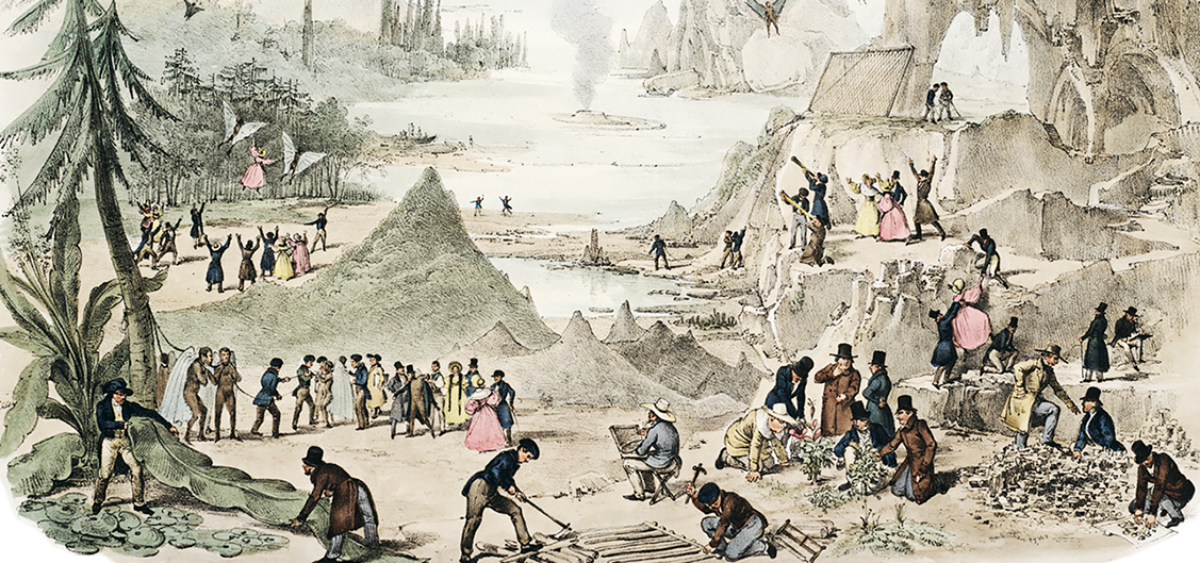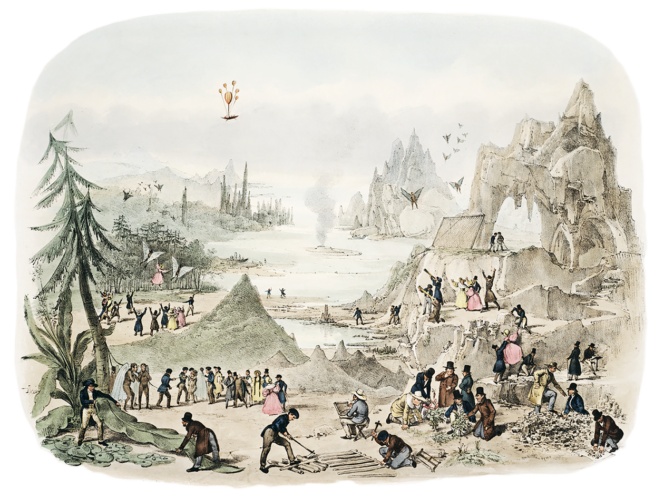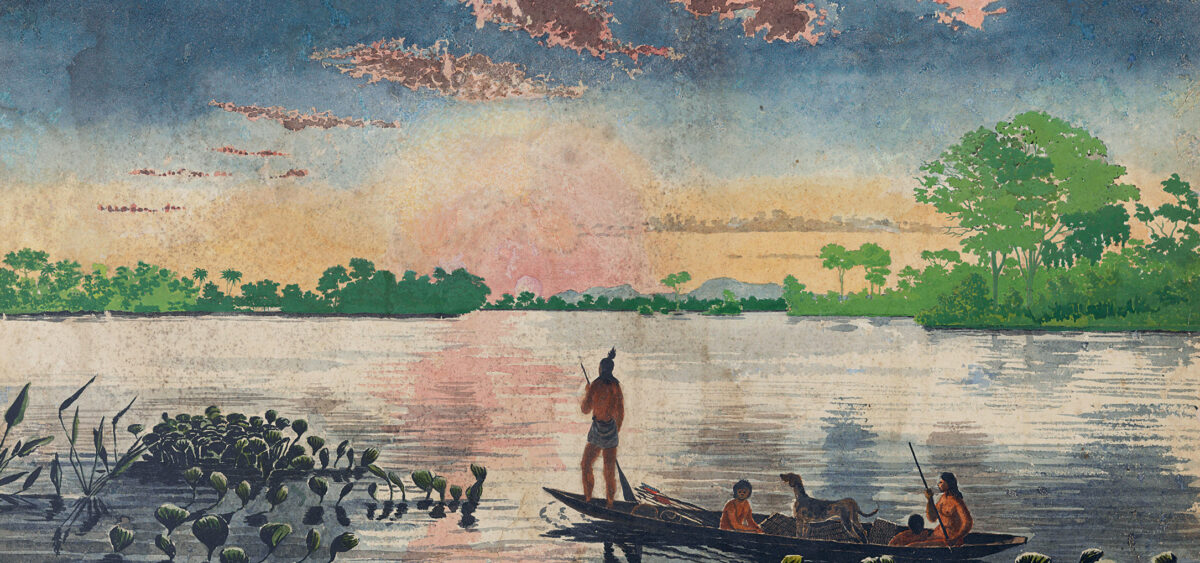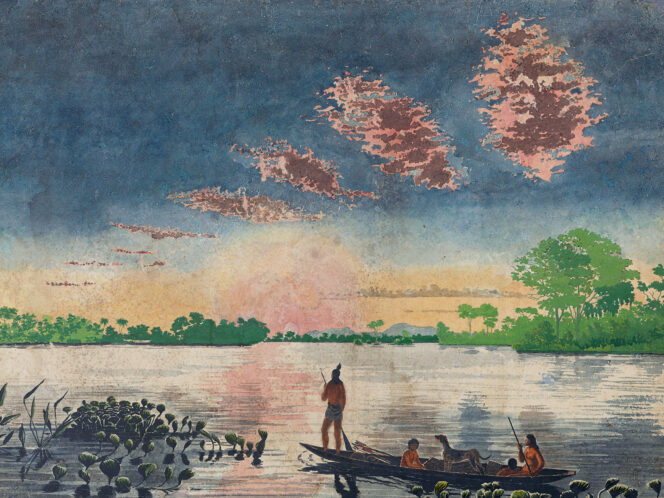
The exceptional pace of new scientific discoveries and ever-faster internet* connections have begun to create confusion in people’s heads. As on 21st August 1835, when a certain New York newspaper reported the following…
On 10th January 1835, at precisely 9.30am, Sir John Herschel aimed his gigantic telescope towards the Moon. For months, the astronomer had been conducting research from the Cape of Good Hope in South Africa. He had travelled there to complete a great scientific project begun by his father. William Herschel, an astronomer and builder of telescopes who had observed and described the skies visible from the Northern Hemisphere. He had broadened the boundaries of the solar system by discovering the planet Uranus. His son John continued his work, observing the heavens from the Southern Hemisphere.
On that memorable day, the scientist’s eye, armed with the lenses of his telescope, came to rest on something that looked like a beautiful basalt cliff, recalling those on the Scottish island of Staffa. The astonished scientist must have blinked; the telescope shifted a bit, and it turned out that right next to it a field of dark red flowers was growing! A field of poppies!
So there was life on the Moon! The question was: just plants, or also animal life? Herschel and his colleagues didn’t have to wait long for the answer. They spied a herd of four-legged animals that resembled bison; a single-horned goat in a bluish, leaden shade; strange round creatures, which raced at great speed over the stony beaches; birds hunting for fish. The researchers counted dozens of species of trees, almost 100 other plants and nine species of mammals. Such precise








